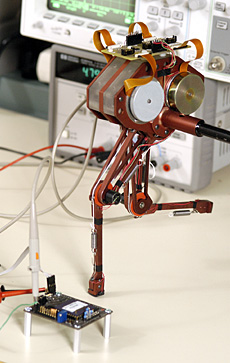Researchers at Johns Hopkins and the University of Maryland are unraveling the circuitry in an eel’s spinal cord to help develop a microchip implant that may someday help paralyzed people walk again.
The neuroprosthetic implant would mimic the signals sent by the brain and coax nerve control centers into sending “walking” instructions to muscles in a patient’s legs.

“Even though the lamprey is a very primitive vertebrate, we and others have shown that it’s remarkably like humans in the ways it makes and controls its locomotion,” says Avis H. Cohen from the University of Maryland. “But unlike that of humans, the lamprey’s nervous system is remarkably easy to study.”
Plus, the eel’s spinal cord can be removed and kept alive in a lab solution. By adding chemicals, the eel’s excised spinal column can be stimulated to produce the pattern of nerve signals seen when a live eel is swimming. The scientists tried to model the lamprey’s spinal cord circuits on a silicon microchip, which provided them with a more natural way to control robotic limbs and showed a possible way to interface electronically with human biology.
The device would contain mixed-signal (analog and digital) integrated microchips and would run on a rechargeable battery.
After the researchers conclude their studies on lampreys, they will try to transfer the results to small mammals, such as rats. Application on humans could be at least 10 years away.
Via KurzweilAI Hopkins News.
